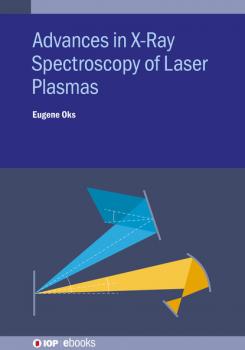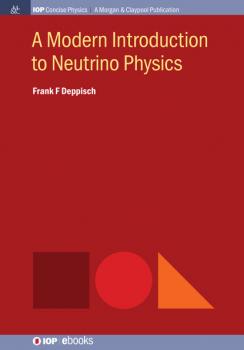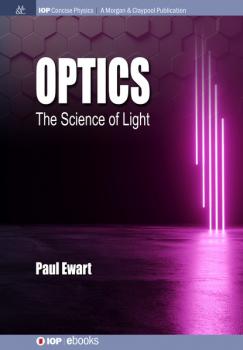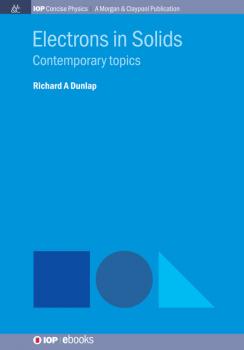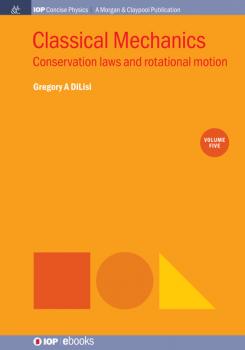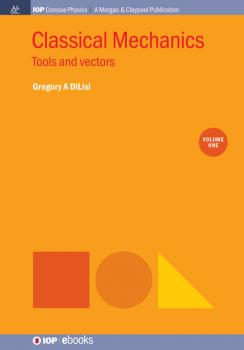ТОП просматриваемых книг сайта:
Физика
Различные книги в жанре Физика, доступные для чтения и скачиванияАннотация
This book presents advances in x-ray spectroscopy of plasmas interacting with a laser radiation and laser-induced plasmas. This research is practically important for the quest for the controlled nuclear fusion, for studying matter under extreme conditions, for providing atomic reference data, for laboratory modelling of physical processes in astrophysical objects, and for a better understanding of intense laser-plasma interactions. This book significantly expands the scope of practical applications of x-ray spectroscopy of laser plasmas compared to traditional x-ray diagnostics of laser plasmas. The recent advances presented in this book enable studying the development of Langmuir waves, ion acoustic waves, transverse electromagnetic waves, parametric decay instabilities, as well as the rates of charge exchange between multicharged ions. Key Features Presents novel methods of the x-Ray spectroscopy for both non-relativistic and relativistic laser-plasma interactions Includes novel methods of the x-Ray spectroscopy for measuring ultra-intense magnetic fields in laser plasmas Examines advanced designs of plasma-tunable x-ray lasers Demonstrates various analytical formalisms underlying the advances described in the book
Аннотация
Volume 3 of this three-part series presents more advanced topics and applications of relativistic quantum field theory. The application of quantum chromodynamics to high-energy particle scattering is discussed with concrete examples for how to compute QCD scattering cross sections. Experimental evidence for the existence of quarks and gluons is then presented both within the context of the naive quark model and beyond. Dr Strickland then reviews our current understanding of the weak interaction, the unified electroweak theory, and the Brout-Higgs-Englert mechanism for the generation of gauge boson masses. The last two chapters contain a self-contained introduction to finite temperature quantum field theory with concrete examples focusing on the high-temperature thermodynamics of scalar field theories, QED, and QCD.
Аннотация
Volume 2 of this three-part series presents the quantization of classical field theory using the path integral formalism. For this volume the target audience is students who wish to learn about relativistic quantum field theory applied to particle physics, however, it is still very accessible and useful for students of condensed matter. This volume begins with the introduction of the path integral formalism for non-relativistic quantum mechanics and then, using this as a basis, extends the formalism to quantum fields with an infinite number of degrees of freedom. Dr. Strickland then discusses how to quantize gauge fields using the Fadeev-Popov method and fermionic fields using Grassman algebra. He then presents the path integral formulation of quantum chromodynamics and its renormalization. Finally, he discusses the role played by topological solutions in non-abelian gauge theories.
Аннотация
A deeper understanding of neutrinos, with the goal to reveal their nature and exact role within particle physics, is at the frontier of current research. This book reviews the field in a concise fashion and highlights the most pressing issues and areas of strongest topical interest. It provides a clear, self-contained, and logical treatment of the fundamental physics aspects, appropriate for graduate students. Starting with the relevant basics of the SM, neutrinos are introduced, and the quantum mechanical effect of oscillations is explained in detail. A strong focus is then set on the phenomenon of lepton number violation, especially in 0nbb decay, as the crucial probe to understand the nature of neutrinos. The role of neutrinos in astrophysics, expected to be of increasing importance for future research, is then described. Finally, models to explain the neutrino properties are outlined. The central theme of the book is the nature of neutrino masses and the above topics will revolve around this issue.
Аннотация
Volume 1 of this three-part series introduces the fundamental concepts of quantum field theory using the formalism of canonical quantization. This volume is intended for use as a text for an introductory quantum field theory course that can include both particle and condensed matter physics students. Dr. Strickland starts with a brief review of classical field theory and uses this as a jumping off point for the quantization of classical field, thereby promoting them to proper quantum fields. He then presents the formalism for real and complex scalar field theories, fermion field quantization, gauge field quantization, toy models of the nuclear interaction, and finally the full Lagrangian for QED and its renormalization. Part of IOP Series in Nuclear Medicine.
Аннотация
Optics has been part of scientific enquiry from its beginning and remains a key element of modern science. This book provides a concise treatment of physical optics starting with a brief summary of geometrical optics. Scalar diffraction theory is introduced to describe wave propagation and diffraction effects and provides the basis for Fourier methods for treating more complex diffraction problems. The rest of the book treats the physics underlying some important instruments for spectral analysis and optical metrology, reflection and transmission at dielectric surfaces and the polarization of light. This undergraduate-level text aims to aid understanding of optical applications in physical, engineering and life sciences or more advanced topics in modern optics.
Аннотация
The transport of electric charge through most materials is well described in terms of their electronic band structure. The present book deals with two cases where the charge transport in a solid is not described by the simple band structure picture of the solid. These cases are related to the phenomena of the quantum Hall effect and superconductivity. Part I of this book deals with the quantum Hall effect, which is a consequence of the behavior of electrons in solids when they are constrained to move in two dimensions. Part II of the present volume describes the behavior of superconductors, where electrons are bound together in Cooper pairs and travel through a material without resistance.
Аннотация
Classical Mechanics teaches readers how to solve physics problems; in other words, how to put math and physics together to obtain a numerical or algebraic result and then interpret these results physically. These skills are important and will be needed in more advanced science and engineering courses. However, more important than developing problem-solving skills and physical-interpretation skills, the main purpose of this multi-volume series is to survey the basic concepts of classical mechanics and to provide the reader with a solid understanding of the foundational content knowledge of classical mechanics. Classical Mechanics: Conservation Laws and Rotational Motion covers the conservation of energy and the conservation of momentum, which are crucial concepts in any physics course. It also introduces the concepts of center-of-mass and rotational motion.
Аннотация
Vortices comprising swirling motion of matter are observable in classical systems at all scales ranging from atomic size to the scale of galaxies. In quantum mechanical systems, such vortices are robust entities whose behaviours are governed by the strict rules of topology. The physics of quantum vortices is pivotal to basic science of quantum turbulence and high temperature superconductors, and underpins emerging quantum technologies including topological quantum computation. This handbook is aimed at providing a dictionary style portal to the fascinating quantum world of vortices.
Аннотация
Classical Mechanics teaches readers how to solve physics problems; in other words, how to put math and physics together to obtain a numerical or algebraic result and then interpret these results physically. These skills are important and will be needed in more advanced science and engineering courses. However, more important than developing problem-solving skills and physical-interpretation skills, the main purpose of this multi-volume series is to survey the basic concepts of classical mechanics and to provide the reader with a solid understanding of the foundational content knowledge of classical mechanics. Classical Mechanics: Tools and Vectors is simply about transmitting information. The conventions used to transmit certain types of numerical information are crucial concepts that must be addressed at the outset of any series on classical mechanics by discussing scalars versus vectors for example.

